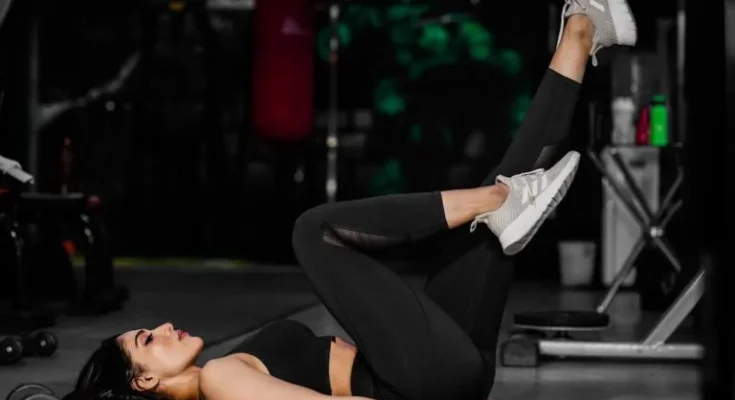Home Yoga Practice for Stress Alleviation: A Detailed Blueprint
In the relentless cadence of modern life, stress often shadows us. However, yoga unveils a tranquil passage to respite, and fortunately, one doesn’t require a formal studio setting to embrace its soothing effects. This comprehensive guide offers a methodical approach to cultivating a serene home yoga routine, designed to dispel stress and elevate mental well-being.
Step 1: Cultivate a Tranquil Nook
Select a peaceful, uncluttered corner of your abode for your yoga rituals. This sanctuary should be a space conducive to focus and relaxation. To amplify the ambiance, consider incorporating calming elements such as aromatic candles, essential oils, or gentle lighting.
Step 2: Dress for Ease
Adorn yourself in attire that is loose, comfortable, and conducive to movement. The freedom of unrestrictive clothing is paramount for a harmonious and soothing yoga session.
Step 3: Equip with a Supportive Mat
Invest in a premium yoga mat to provide a stable, non-slip foundation for your practice. Ensure the mat accommodates your full range of motion, offering enough length for your body during various poses.
Step 4: Breathe with Awareness
Commence your practice by centering on breath awareness. Settle into a comfortable position, close your eyes, and tune into your breath. Deep, deliberate inhalations and exhalations ground your awareness, anchoring you in the present.
Step 5: Gentle Warm-Up
Initiate with light warm-up movements. Engage in rotations of the neck, rolls of the shoulders, and circles of the ankles to gently unlock your joints and prepare your body for deeper engagement.
Step 6: Flow through Asanas (Postures)
Explore a sequence of yoga asanas (poses) that target stress reduction and relaxation. Consider the following postures for easing tension:
- Child’s Pose (Balasana): A restorative posture that elongates the lower back, fostering relaxation.
- Cat-Cow Stretch (Marjaryasana-Bitilasana): This dynamic stretch alleviates tension along the spine, enhancing flexibility.
- Downward Dog (Adho Mukha Svanasana): Elongates the spine, relieving stress in the shoulders and upper back.
- Forward Fold (Uttanasana): This forward bend calms the mind and stretches the hamstrings.
- Legs Up the Wall (Viparita Karani): A restorative inversion that reduces anxiety and induces relaxation.
Step 7: Harmonize Breath with Movement
Maintain your focus on deep, rhythmic breaths throughout your practice. Integrate pranayama techniques, such as “Ujjayi” breathing, to elevate your breath awareness and deepen relaxation.
Step 8: Conclude with Savasana (Corpse Pose)
End your session with Savasana, the ultimate relaxation pose. Lie supine, allow your muscles to release all tension, and center your attention on the rhythm of your breath. This final pose enables the integration of the practice’s benefits, fostering profound tranquility.
Step 9: Transition to Meditation
Following Savasana, ease into meditation. Whether guided, mindful, or breath-focused, meditation is a powerful practice for stress relief.
Step 10: Gently Re-enter Your Day
Conclude your practice by acknowledging the time and effort you’ve dedicated to your well-being. Gradually transition back to your daily activities, carrying with you the sense of calm and balance cultivated during your practice.
Consistency Is Key
To fully experience the calming effects of a home yoga practice, consistency is essential. Even dedicating just 10–15 minutes daily can dramatically reduce stress and enhance mental clarity. With time, your home yoga space will evolve into a sanctuary of serenity amidst life’s demands.
Mindfulness and Its Role in Stress Relief
Yoga transcends mere physical postures—it encompasses mindfulness and meditation, both potent tools for alleviating stress.
Mindfulness
Mindfulness is the art of remaining fully engaged in the present moment, devoid of judgment. Throughout your yoga practice, you can cultivate mindfulness by paying attention to bodily sensations, breath, and the environment. This shift in focus directs your attention away from stressors and anchors you in the present.
Meditation
Meditation is an integral component of yoga and serves as an excellent means of stress management. Whether through guided sessions, visualizations, or silent introspection, meditation quiets the mind and diminishes anxiety. It can be practiced both within your yoga session and independently.
Exploring Stress-Alleviating Yoga Styles
Several yoga styles are particularly effective for stress relief. Consider incorporating these into your home routine:
- Hatha Yoga: A slow-paced, gentle style focused on breath control and alignment, perfect for beginners and stress alleviation.
- Restorative Yoga: This deeply relaxing style involves holding poses for extended periods, often with props like bolsters and blankets. It is particularly effective for calming the nervous system.
- Yin Yoga: With a focus on long-held passive postures, Yin targets the deep connective tissues, releasing tension and promoting flexibility—ideal for stress reduction.
- Vinyasa Flow: A dynamic style where movement is synchronized with breath. Vinyasa offers a balanced blend of physical exertion and relaxation.
Utilizing Digital Tools for Your Practice
Numerous online platforms can assist in guiding your home yoga journey:
- YouTube: A wealth of yoga tutorials and mindfulness exercises are available through various instructors and channels.
- Yoga Apps: Consider apps like “Daily Yoga,” “Down Dog,” or “Yoga for Beginners” for tailored home practices.
- Online Yoga Communities: Engage with virtual yoga communities for shared experiences, inspiration, and further guidance.
Strengthening the Mind-Body Connection
Remember, yoga’s essence lies in fostering the mind-body connection. Recognize how stress manifests in your physical body—perhaps as tension in your shoulders or shallow breathing. Use your yoga practice to dissolve these manifestations and restore relaxation.
Gratitude and Compassion for Oneself
Infuse your practice, and your daily life, with gratitude and self-compassion. Acknowledge your body’s efforts, express appreciation, and be gentle with yourself. This journey is ongoing, and embracing it with kindness enhances the healing effects of yoga.
Conclusion
Home-based yoga is a powerful and accessible avenue for stress relief. By incorporating physical movement, mindfulness, meditation, and breath control, you can create a personal sanctuary of peace. Through consistency, exploration of styles, digital tools, and an awareness of the mind-body connection, you’ll discover a transformative practice that fosters inner tranquility and emotional balance.
